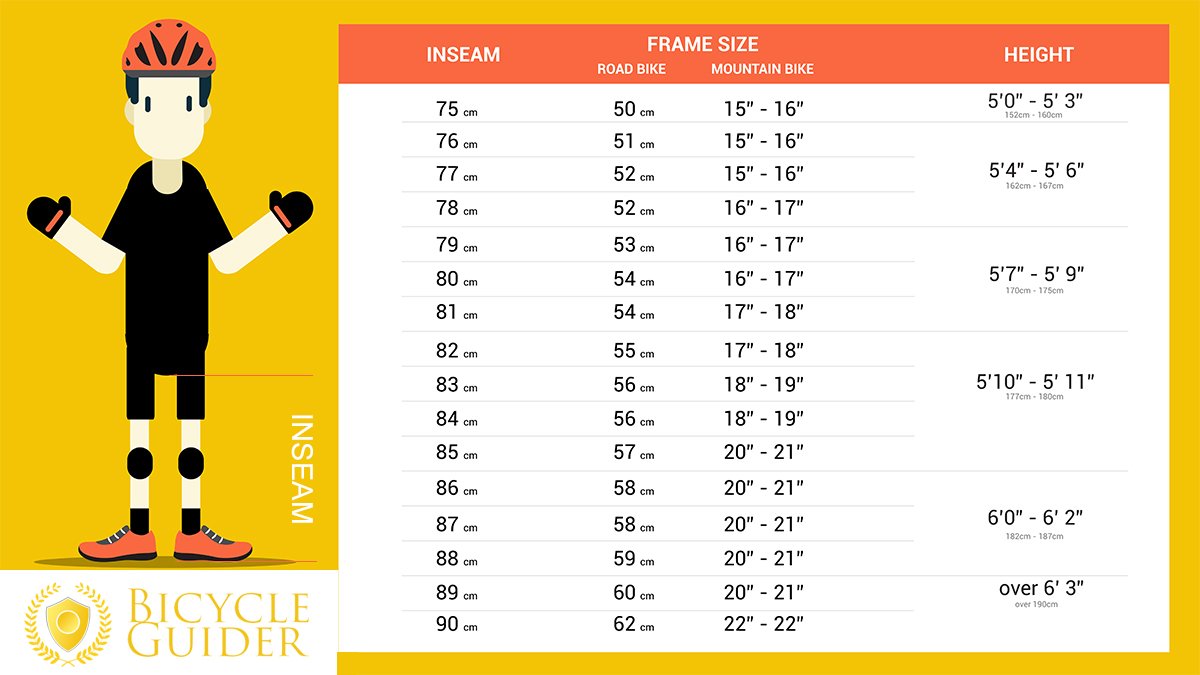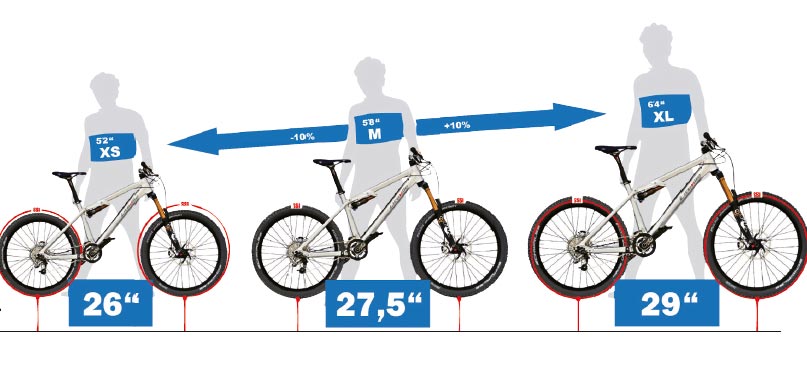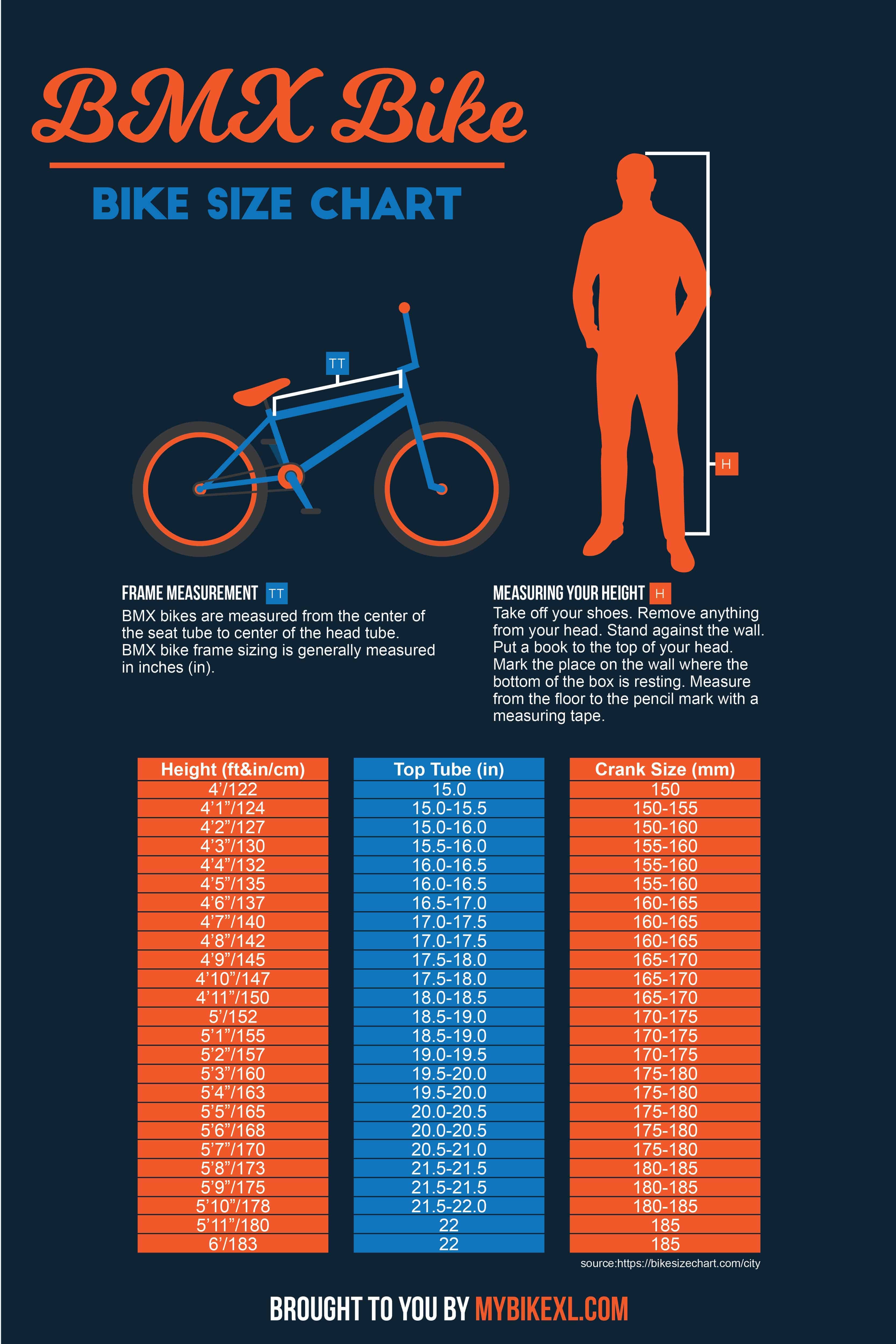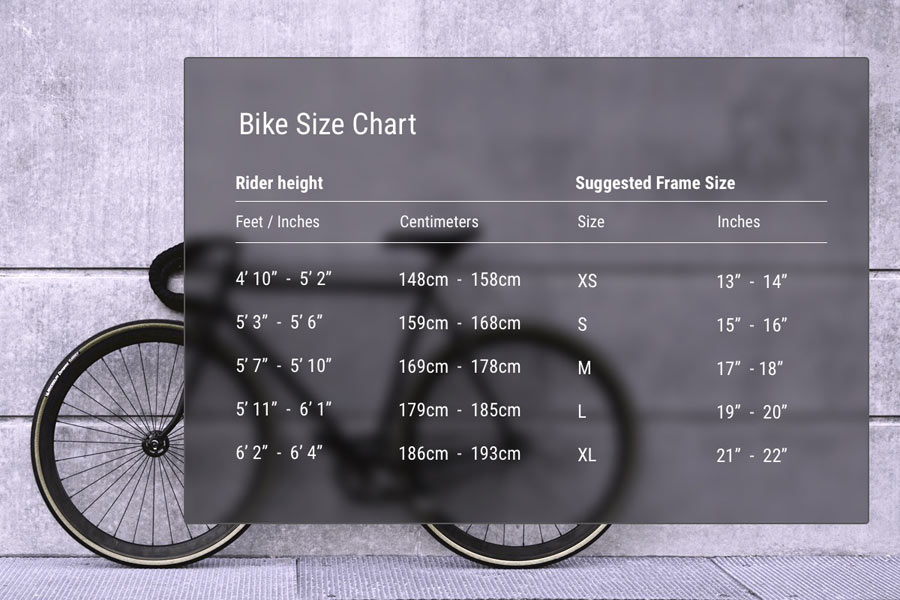The Significance of Choosing the Right Bike Size
Selecting the correct bike size is crucial for a safe, comfortable, and enjoyable mountain biking experience. A properly sized bike can significantly improve performance, prevent injuries, and enhance overall enjoyment. Conversely, a poorly fitting bike can lead to discomfort, decreased control, and increased risk of accidents. This is where the importance of a reliable women’s mountain bike size chart comes into play.
Anatomy of a Women’s Mountain Bike: Key Measurements to Consider
A well-fitting women’s mountain bike is the result of several key measurements working in harmony. These essential factors contribute to the overall fit and rider comfort:
- Frame size: The foundation of a bike’s fit, frame size is typically measured in inches or centimeters and refers to the distance from the bottom bracket to the top of the seat tube. A properly sized frame provides a stable platform for the rider and allows for optimal saddle height and reach adjustments.
- Saddle height: Adjusting the saddle height ensures a comfortable and efficient pedaling position. The ideal saddle height generally places the rider’s leg in a slightly bent position at the bottom of the pedal stroke.
- Saddle setback: Saddle setback, or fore-aft position, affects the rider’s weight distribution and pedaling efficiency. A balanced position should place the rider’s knee directly over the pedal spindle at the bottom of the stroke.
- Handlebar height: Proper handlebar height reduces strain on the rider’s back, shoulders, and arms. Adjustments to the stem or handlebar risers can raise or lower the bars to achieve a comfortable riding position.
- Reach: Reach refers to the horizontal distance between the saddle and handlebars. A balanced reach allows for a comfortable grip on the bars and promotes stability and control. Adjustments to the stem length or angle can fine-tune the reach for individual riders.
Understanding these critical measurements and their impact on a women’s mountain bike fit is essential for achieving a comfortable and efficient riding position. A well-fitted bike can significantly enhance performance, reduce the risk of injuries, and contribute to a more enjoyable mountain biking experience.
How to Measure Yourself for a Women’s Mountain Bike
To ensure a proper fit when selecting a women’s mountain bike, accurate measurements of your body are essential. Follow this step-by-step guide to gather the necessary information:
- Inseam length: Measure the length of your inseam by standing with your back against a wall and placing a book between your legs, simulating the position of a saddle. Make sure your feet are flat on the floor. Measure the distance from the top of the book to the floor. This value represents your inseam length.
- Height: Measure your overall height without shoes. Stand straight with your back against a wall and place a level on your head to ensure it is parallel to the floor. Record the distance from the floor to the bottom of the level.
- Arm length: Measure your arm length by standing straight with your arms extended to the sides. Have a friend measure the distance from the acromion process (the bony point at the top of your shoulder) to the wrist, along the outside of the arm.
When taking these measurements, use a metal tape measure for increased accuracy. Record your values in centimeters or inches, depending on the measurement system you prefer. These figures will help you determine the appropriate frame size and saddle height for your women’s mountain bike.
Remember, accurate measurements are crucial for a comfortable and efficient bike fit. Take your time and ensure precision to make the most informed decision when choosing your new mountain bike.
Women’s Mountain Bike Size Chart: A Valuable Resource
A comprehensive women’s mountain bike size chart is an essential tool for riders seeking the perfect bike fit. This chart typically provides frame size recommendations based on a rider’s height and inseam length, offering a starting point for selecting the ideal bike size. However, it is crucial to remember that a size chart is merely a general guideline, and individual preferences and body types may require additional adjustments.
To effectively use a women’s mountain bike size chart, follow these steps:
- Determine your height and inseam length using the measurement guide provided in the “How to Measure Yourself for a Women’s Mountain Bike” section.
- Locate the corresponding frame size recommendations on the size chart. These recommendations typically appear as a range of heights associated with specific frame sizes.
- Identify the frame size that falls within your height range. Keep in mind that the inseam length measurement can help narrow down the options if you fall near the upper or lower end of a height range.
- Once you have identified a suitable frame size, consider additional factors such as saddle height, saddle setback, handlebar height, and reach. These measurements can be adjusted to accommodate individual preferences and body types, further refining the bike fit.
It is vital to recognize that a women’s mountain bike size chart has limitations. Factors such as personal flexibility, strength, and riding style can influence the ideal bike fit. Therefore, it is essential to approach the size chart as a starting point and be prepared to make adjustments as needed to achieve the perfect bike fit.
Popular Women’s Mountain Bike Models and Their Size Ranges
When searching for the perfect women’s mountain bike, it is essential to consider the diverse range of options available. Many brands offer women’s-specific designs and sizing tailored to the unique needs and proportions of female riders. Here, we review popular women’s mountain bike models and their corresponding size ranges.
Trek Women’s Mountain Bikes
Trek is a well-known brand in the cycling industry, offering a variety of women’s mountain bikes. Their Roscoe, Fuel EX, and Remedy series cater to different riding styles and abilities, with size ranges from Extra Small (XS) to Extra Large (XL). Trek’s women’s-specific models feature narrower handlebars, women’s saddle options, and adjusted geometry for a comfortable and efficient riding position.
Specialized Women’s Mountain Bikes
Specialized is another popular brand with a strong focus on women’s cycling. Their Stumpjumper, Rhyme, and Fuse series offer women’s-specific designs in sizes Extra Small (XS) to Large (L). These bikes feature women’s saddle options, shorter stems, and narrower handlebars to accommodate female riders. Additionally, Specialized’s women’s mountain bikes have adjusted geometry and suspension tuning for improved handling and comfort.
Liv Women’s Mountain Bikes
Liv, a sub-brand of Giant Bicycles, specializes in women’s-specific designs. Their Pique, Intrigue, and Tempt series cater to various riding styles and abilities, with size ranges from Extra Small (XS) to Large (L). Liv’s women’s mountain bikes are tailored to female riders, with women’s saddle options, adjusted geometry, and women’s-specific components for optimal comfort and performance.
Juliana Women’s Mountain Bikes
Juliana, a Santa Cruz Bicycles brand, offers women’s-specific mountain bikes in sizes Extra Small (XS) to Extra Large (XL). Their Roubion, Joplin, and Furtado series cater to different riding styles and abilities. Juliana’s women’s mountain bikes feature women’s saddle options, shorter stems, and narrower handlebars, ensuring a comfortable and efficient riding position for female riders.
These popular women’s mountain bike models and their size ranges demonstrate the diversity of options available for female riders. By considering women’s-specific designs and sizing, female mountain bikers can find the perfect bike to suit their unique needs and preferences.
Customizing Your Bike Fit: Adjusting Components for Optimal Comfort
Once you have selected the appropriate frame size using a women’s mountain bike size chart, it is crucial to fine-tune your bike fit for optimal comfort and performance. Adjusting various components, such as saddle height, saddle setback, handlebar height, and reach, can accommodate individual preferences and body types. Here, we discuss these adjustments and their impact on your riding experience.
Saddle Height
Proper saddle height is essential for efficient pedaling and reduced strain on your knees. To adjust saddle height, first, ensure your bike is securely fastened in a work stand or against a solid object. Next, use a spanner wrench to loosen the seatpost clamp, then raise or lower the seatpost until your leg extension is approximately 80-90% of a full extension when the pedal is at its lowest position. Tighten the seatpost clamp securely, and test the saddle height by pedaling a short distance. Make further adjustments as needed until you find the most comfortable position.
Saddle Setback
Saddle setback, or fore-aft position, affects your weight distribution and pedaling efficiency. To adjust saddle setback, use a level or a plumb line to ensure the saddle is parallel to the ground. Next, position the saddle so that the knee is directly over the pedal spindle when the pedal is at the 3 o’clock position. This position should allow for a slight bend in the knee and place the rider’s foot in a neutral position on the pedal. Make adjustments as needed to achieve the most comfortable position.
Handlebar Height
Handlebar height influences your riding posture and comfort. To adjust handlebar height, use a spanner wrench to loosen the stem clamp and stem bolts. You can then raise or lower the handlebars by adjusting the stem height or using spacers. Once you have achieved the desired handlebar height, tighten the stem clamp and stem bolts securely. Ensure that the handlebars are level or slightly angled downward for optimal control and comfort.
Reach
Reach refers to the horizontal distance between the saddle and the handlebars. A proper reach ensures a comfortable grip on the handlebars and contributes to overall stability and control. To adjust reach, you can use a stem with a different angle or length, or adjust the saddle setback. Make incremental adjustments and test the new position to ensure it is comfortable and provides the desired level of control.
Customizing your bike fit through these adjustments can significantly improve your comfort and performance on the trails. By accommodating individual preferences and body types, you can maintain a comfortable and efficient riding position, reducing the risk of injuries and enhancing overall enjoyment of mountain biking.
Frequently Asked Questions About Women’s Mountain Bike Sizing
Choosing the right bike size is crucial for a comfortable and safe riding experience. However, many riders have questions and concerns about women’s mountain bike sizing. Here, we address some common questions and provide guidance for riders uncertain about their bike size.
“What if I fall between sizes in a women’s mountain bike size chart?”
If you fall between sizes on a women’s mountain bike size chart, consider your flexibility, riding style, and personal preferences. It may be possible to size up or down, depending on your comfort level and the adjustability of the bike’s components. Consult the bike manufacturer’s recommendations and, if possible, test ride different sizes to determine the best fit.
“Can I adjust my bike if it’s too small or too large?”
Yes, many components on a women’s mountain bike can be adjusted to improve fit and comfort. Saddle height, saddle setback, handlebar height, and reach can all be fine-tuned to accommodate individual preferences and body types. However, if the frame size is significantly too small or too large, it may be challenging to achieve a comfortable riding position. In such cases, it may be necessary to consider a different frame size or a different bike model.
“How do I know if my bike fit is correct?”
A proper bike fit should allow for a comfortable and efficient riding position, with minimal strain on your back, neck, and joints. You should be able to maintain a slight bend in your elbows and knees while pedaling, and your saddle should be level or slightly angled downward. Additionally, your handlebars should be at a height and distance that allows for a neutral spine and relaxed shoulders. If you experience discomfort or pain during or after riding, it may be an indication that your bike fit requires adjustment.
“Should I consult a professional bike fitter?”
Consulting a professional bike fitter can be beneficial, particularly for riders with unique body proportions, flexibility limitations, or specific comfort concerns. A professional bike fitter can provide personalized recommendations and adjustments, ensuring a comfortable and efficient riding position. However, if you are comfortable with basic bike maintenance and have a good understanding of your own preferences and body measurements, you may be able to achieve a satisfactory bike fit on your own.
Addressing these frequently asked questions about women’s mountain bike sizing can help riders make informed decisions and find the perfect bike for their needs. By understanding the importance of a proper bike fit and the adjustability of various components, riders can enhance their comfort, performance, and overall enjoyment of mountain biking.
Maintaining Your Bike Fit: Periodic Check-ups and Adjustments
As riders grow in skill and experience, their body proportions, flexibility, and riding preferences may change. Regular bike fit evaluations and adjustments can help riders maintain a comfortable and efficient riding position, ensuring long-term enjoyment and performance. Here, we discuss the importance of periodic bike fit check-ups and adjustments.
Why Regular Bike Fit Evaluations Matter
Over time, factors such as muscle development, weight changes, and flexibility shifts can impact your bike fit. Regular bike fit evaluations allow you to identify and address these changes, ensuring a comfortable and efficient riding position. By addressing potential issues early, you can prevent discomfort, injuries, and the need for significant adjustments down the line.
When to Schedule a Bike Fit Evaluation
Consider scheduling a bike fit evaluation if you experience discomfort or pain during or after riding, if you notice changes in your flexibility or body proportions, or if you are planning to upgrade or change your bike. Additionally, riders who are increasing their training volume, participating in events or races, or returning from an injury may benefit from a bike fit evaluation.
Components to Re-evaluate During a Bike Fit Check-up
During a bike fit check-up, re-evaluate key components such as saddle height, saddle setback, handlebar height, and reach. Ensure that these measurements remain consistent with your current body proportions, flexibility, and riding style. Make incremental adjustments as needed to maintain a comfortable and efficient riding position.
The Benefits of Regular Bike Fit Adjustments
Regular bike fit evaluations and adjustments can help riders maintain a comfortable and efficient riding position, reducing the risk of injuries and enhancing overall enjoyment of mountain biking. By addressing potential issues early, riders can prevent discomfort, maintain their performance, and extend the lifespan of their bike and components.
Emphasizing the importance of periodic bike fit check-ups and adjustments can help riders maintain a comfortable and efficient riding position, ensuring long-term enjoyment and performance. By incorporating regular bike fit evaluations into their training routine, riders can adapt to changing body proportions, flexibility, and riding preferences, ensuring a safe and enjoyable mountain biking experience.








